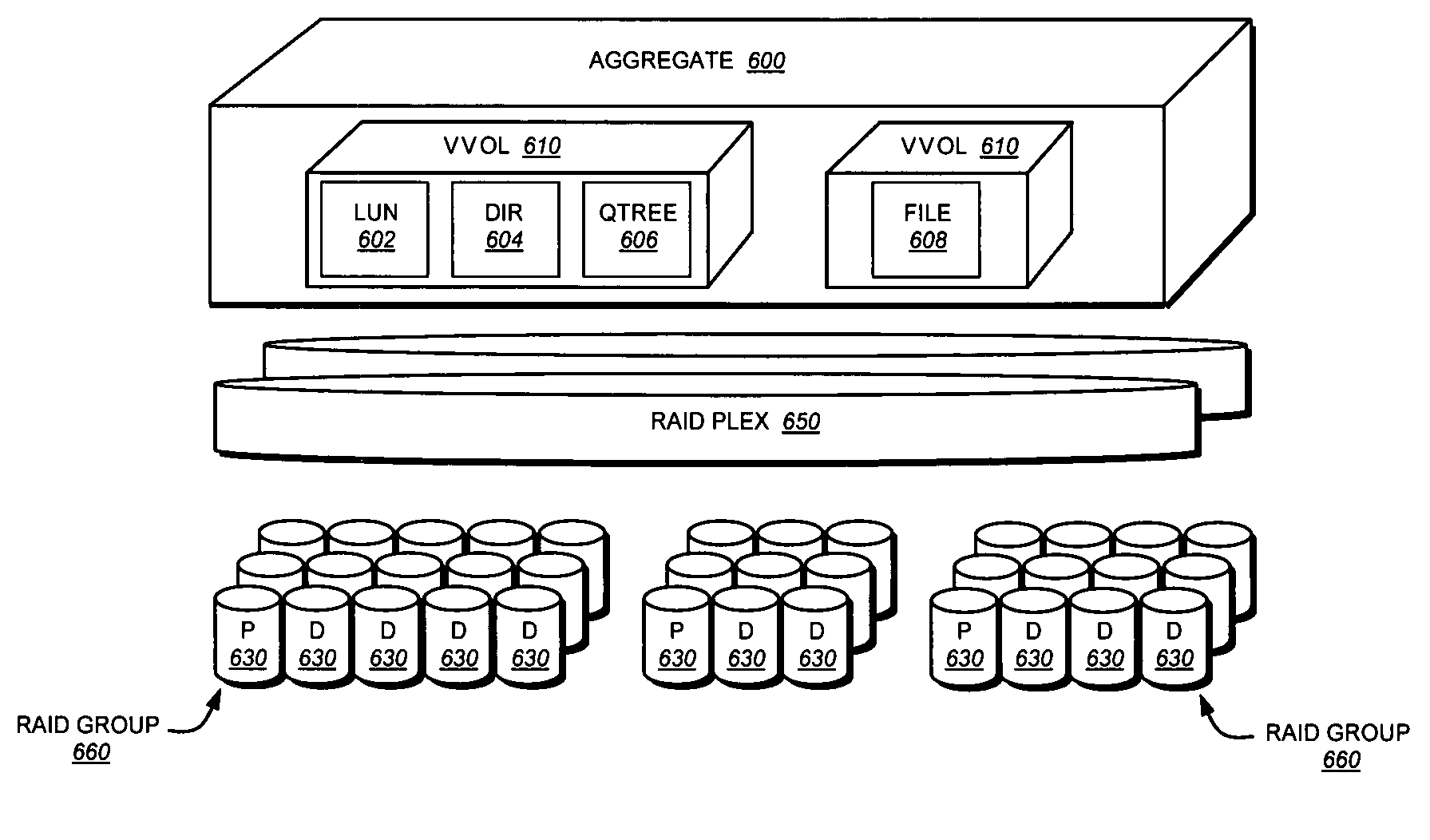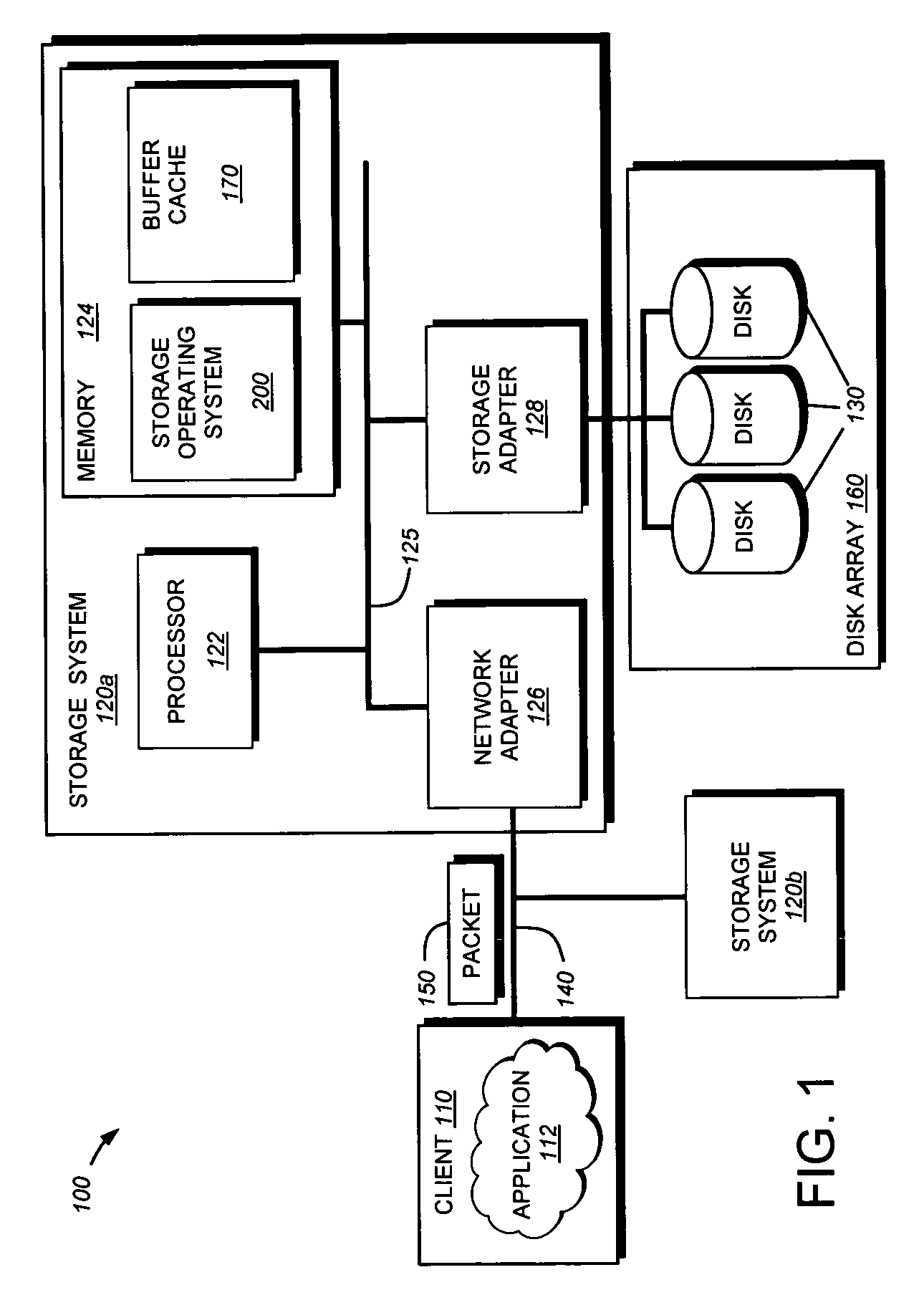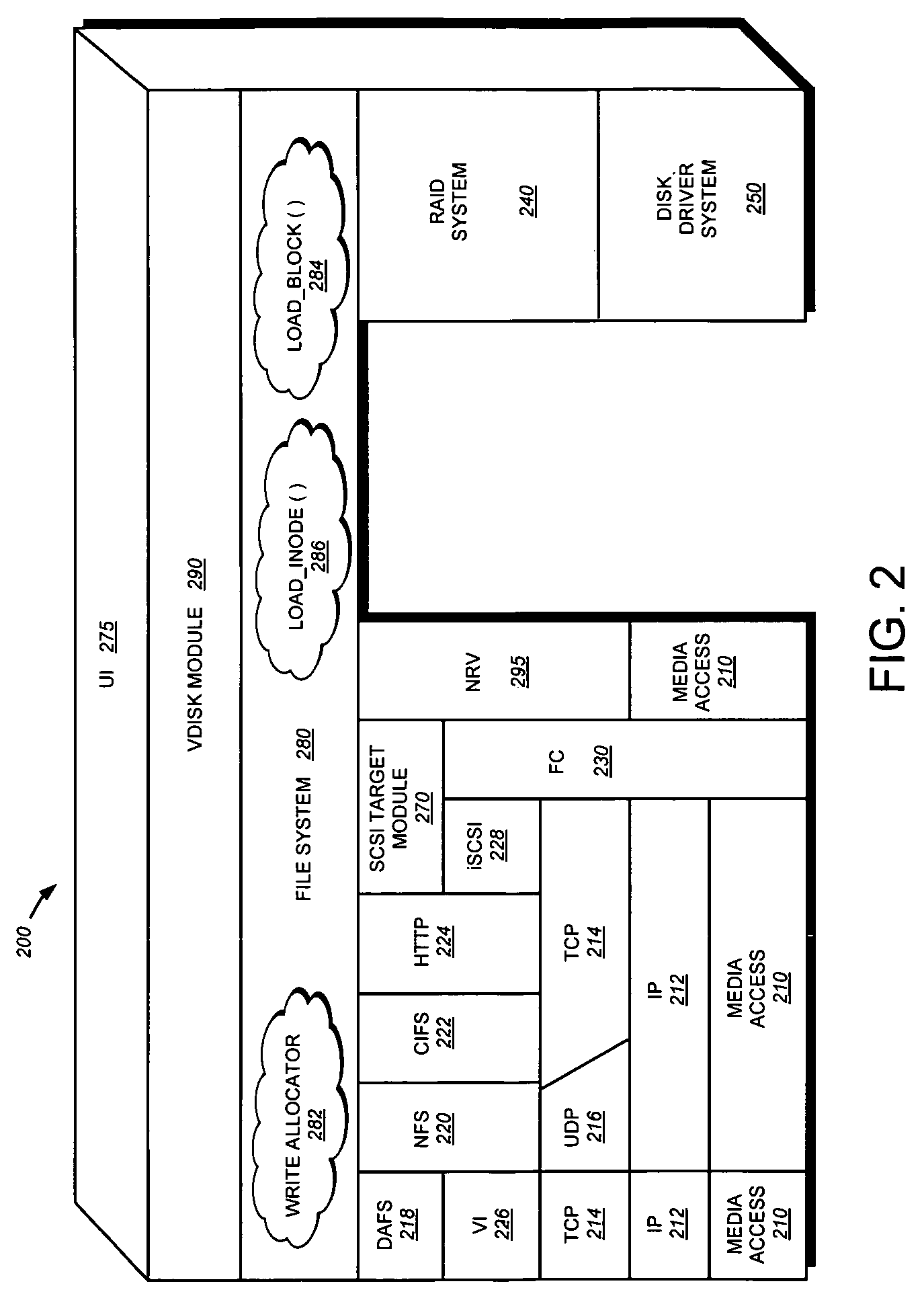Architecture for supporting sparse volumes
a technology for sparse volumes and architectures, applied in the field of file systems, can solve the problems of virtually no discernable time where data is not accessible, volume (or other data container, such as a file or directory), and the inability to reconstruct data, etc., to achieve the effect of optimizing the use of parity disks
- Summary
- Abstract
- Description
- Claims
- Application Information
AI Technical Summary
Benefits of technology
Problems solved by technology
Method used
Image
Examples
Embodiment Construction
[0058]A. Network Environment
[0059]FIG. 1 is a schematic block diagram of an environment 100 including a storage system 120 that may be advantageously used with the present invention. The storage system is a computer that provides storage service relating to the organization of information on storage devices, such as disks 130 of a disk array 160. The storage system 120 comprises a processor 122, a memory 124, a network adapter 126 and a storage adapter 128 interconnected by a system bus 125. The storage system 120 also includes a storage operating system 200 that preferably implements a high-level module, such as a file system, to logically organize the information as a hierarchical structure of directories, files and special types of files called virtual disks (hereinafter “blocks”) on the disks.
[0060]In the illustrative embodiment, the memory 124 comprises storage locations that are addressable by the processor and adapters for storing software program code. A portion of the memor...
PUM
 Login to View More
Login to View More Abstract
Description
Claims
Application Information
 Login to View More
Login to View More - R&D
- Intellectual Property
- Life Sciences
- Materials
- Tech Scout
- Unparalleled Data Quality
- Higher Quality Content
- 60% Fewer Hallucinations
Browse by: Latest US Patents, China's latest patents, Technical Efficacy Thesaurus, Application Domain, Technology Topic, Popular Technical Reports.
© 2025 PatSnap. All rights reserved.Legal|Privacy policy|Modern Slavery Act Transparency Statement|Sitemap|About US| Contact US: help@patsnap.com



